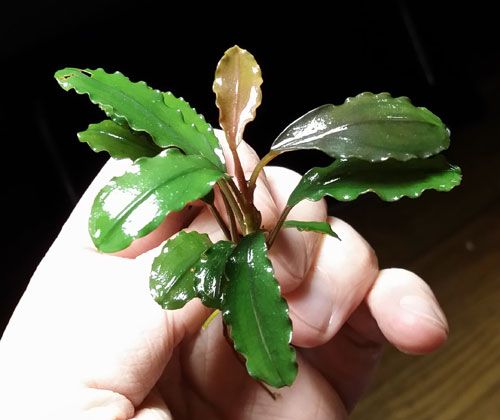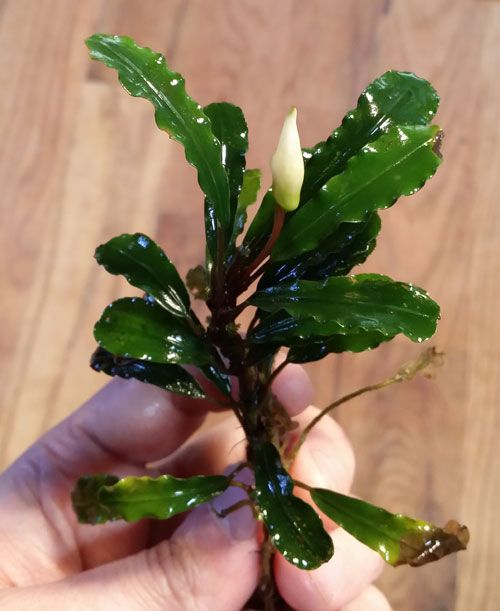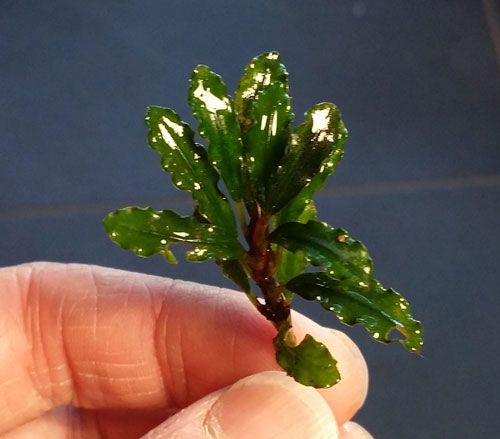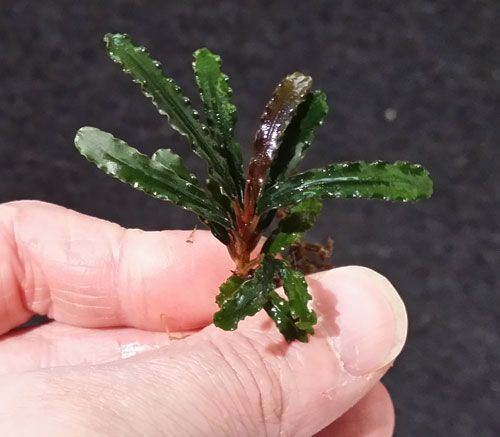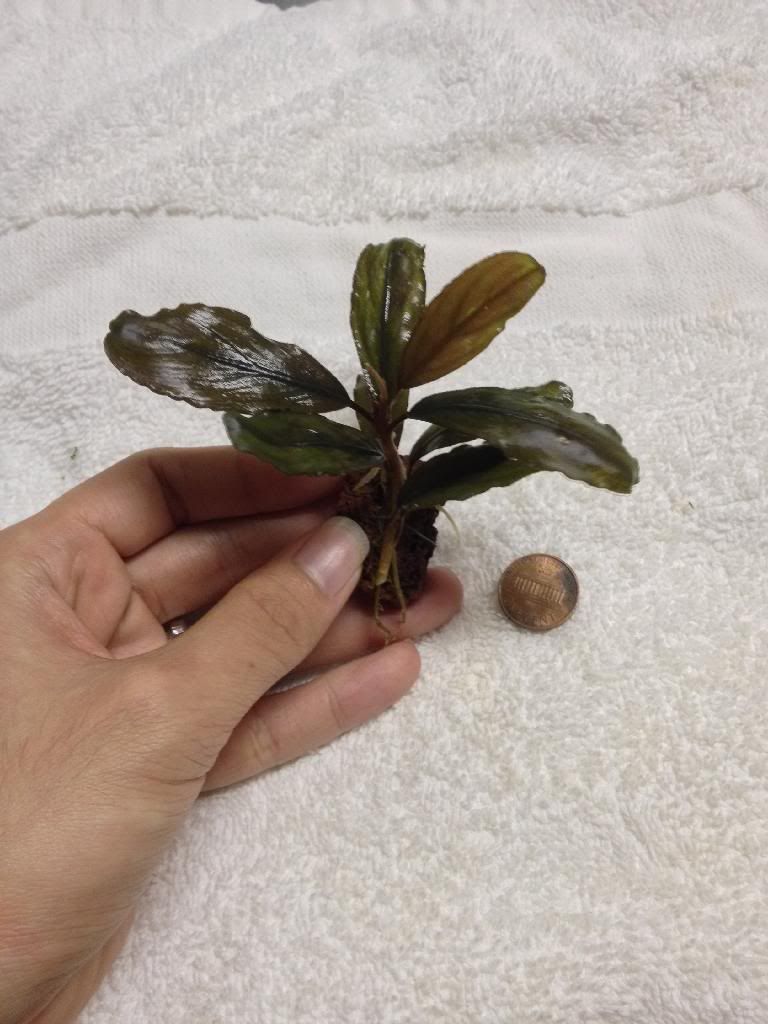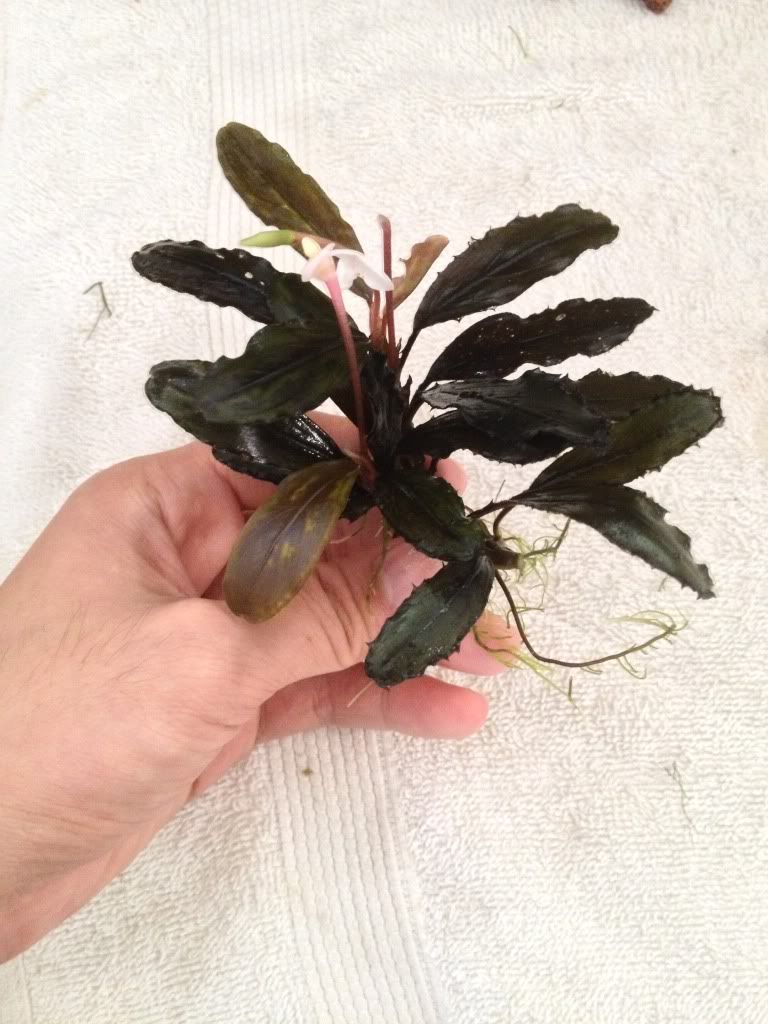So I've been getting a ton of questions about growing Bucephalandra (buce) lately due to my sales and ROAK, so I figured it would be best to get a thread for the discussion rather than doing it all in IMs.
A quick overview:
All Bucephalandra are rhizome plants, and should be planted either with roots into substrate without covering the rhizome, or attached to wood or rock. The roots will attach very firmly to either.
Naming: There are many many different looking buce, each with their own name. Almost none of these names are scientific, but seem to refer to the location they were found, or determined by the finder. There is a ton of confusion surrounding naming, and very little standardization. Two plants with the same name could end up being completely different due to one or both being misnamed somewhere along the line. I've owned over 40 types of buce, and seen first hand the problems with the naming conventions on many many occasions.
Lighting: Buce seems to survive under most lighting, however seems to need at least medium light for much growth. It grows quit slowly even under high light, with no more than 1 new leaf ever week at most.
Ferts: Buce does like a full range of ferts in the water column. If roots are down into substrate it can take some from there, but it seems to take most from the water. I've only grown them using EI dosing.
CO2: Buce really likes a good source of CO2. Injected CO2 gas is ideal, but alternate sources such as excel does also work. I've grown buce in a tank using nothing but excel, but growth was significantly slower, with smaller leaves, and almost no new growing points to form new plants.
Splitting: Buce can be split and propogated much like Anubias. Rhizomes can be cut, and new plants can form at any point along a rhizome. Once new plants start to generate their own roots, you can cut them from the rhizome to grow on it's own.
Acclimating: Buce does not like changing conditions. It will often lose a good number of leaves when being placed into a new aquarium. A tank with good levels of CO2 definitely helps prevent too much loss.
Emmersed: Buce can be grown emmersed. Switching from emmersed to submersed often causes the majority of leaves to be lost as it acclimates. If the rhizome does not rot, new growth should start after a week or two of acclimation.
This is most observations from growing them myself, and from what I've read from other peoples experiences. I'm in no way an expert in aquatic plants, and just been focused on Buce for about a year now, and have my share of successes and complete failures.
I do have to say though, I adore all Bucephalandra, and am totally addicted. Watching them (slowly) grow and fill out into larger plants is amazing and I have yet to have any type which disappointed me!!
This thread is open to stories from anyones experiences with this plant, photos, experiments, identification help, anything really related to Buce.
Buce Addicts wanted!
A quick overview:
All Bucephalandra are rhizome plants, and should be planted either with roots into substrate without covering the rhizome, or attached to wood or rock. The roots will attach very firmly to either.
Naming: There are many many different looking buce, each with their own name. Almost none of these names are scientific, but seem to refer to the location they were found, or determined by the finder. There is a ton of confusion surrounding naming, and very little standardization. Two plants with the same name could end up being completely different due to one or both being misnamed somewhere along the line. I've owned over 40 types of buce, and seen first hand the problems with the naming conventions on many many occasions.
Lighting: Buce seems to survive under most lighting, however seems to need at least medium light for much growth. It grows quit slowly even under high light, with no more than 1 new leaf ever week at most.
Ferts: Buce does like a full range of ferts in the water column. If roots are down into substrate it can take some from there, but it seems to take most from the water. I've only grown them using EI dosing.
CO2: Buce really likes a good source of CO2. Injected CO2 gas is ideal, but alternate sources such as excel does also work. I've grown buce in a tank using nothing but excel, but growth was significantly slower, with smaller leaves, and almost no new growing points to form new plants.
Splitting: Buce can be split and propogated much like Anubias. Rhizomes can be cut, and new plants can form at any point along a rhizome. Once new plants start to generate their own roots, you can cut them from the rhizome to grow on it's own.
Acclimating: Buce does not like changing conditions. It will often lose a good number of leaves when being placed into a new aquarium. A tank with good levels of CO2 definitely helps prevent too much loss.
Emmersed: Buce can be grown emmersed. Switching from emmersed to submersed often causes the majority of leaves to be lost as it acclimates. If the rhizome does not rot, new growth should start after a week or two of acclimation.
This is most observations from growing them myself, and from what I've read from other peoples experiences. I'm in no way an expert in aquatic plants, and just been focused on Buce for about a year now, and have my share of successes and complete failures.
I do have to say though, I adore all Bucephalandra, and am totally addicted. Watching them (slowly) grow and fill out into larger plants is amazing and I have yet to have any type which disappointed me!!
This thread is open to stories from anyones experiences with this plant, photos, experiments, identification help, anything really related to Buce.
Buce Addicts wanted!













